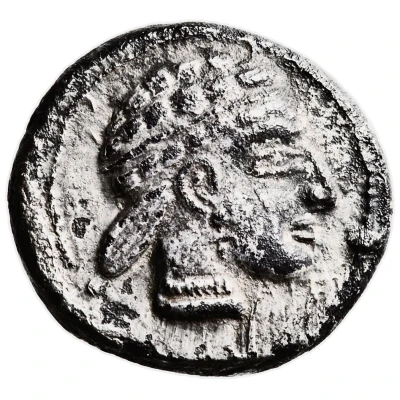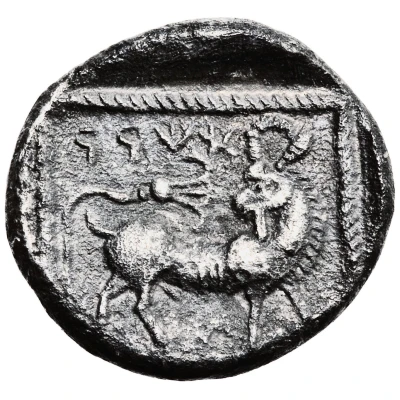¼ Shekel 539 BC - 332 BC
| Silver | 13.67 g | 15 mm |
| Issuer | Ashdod (Cities of Philistia) |
|---|---|
| Type | Standard circulation coin |
| Years | 539 BC - 332 BC |
| Value | ¼ Shekel |
| Currency | Drachm |
| Composition | Silver |
| Weight | 13.67 g |
| Diameter | 15 mm |
| Shape | Round (irregular) |
| Technique | Hammered |
| Demonetized | Yes |
| Updated | 2024-10-10 |
| Numista | N#94194 |
|---|---|
| Rarity index | 100% |
Reverse
Double-protome bull bending forelegs, surrounded by twisted-rope (guilloche) border set in incuse square
Lettering: אשדד
Translation: Ashdod
Comment
This Philistian silver drachm is one of the most intriguing coins minted in ancient Israel, from both an artistic and an historical point of view.The coin's obverse bears the hybrid head of a man facing left and a monsterlike animal facing right within a circular cable-pattern border. The man wears a circular earring, and the image of a lion's head and forelegs adorns his forehead. The animal image combines the face of a lion with the horns of a bull and the beard of a goat. A wing extends back above its humanlike ear, which is also adorned with a circular earring. The wing and beard simultaneously serve as the man's headdress, covering the top of his head and extending down the back of his neck. This skillful illusion merges the two figures into a single image. The reverse shows a double-protome bull with bent forelegs, surmounted by the Aramaic inscription: insert (Ashdod). The double-protome motif, based upon the Achaemenid column capital found, for example, at Persepolis and Susa, represents one of the most characteristic features of Persian art.
The appearance of complex Achaemenid motifs in our coin and other Philistian issues of Ashdod, Ashkelon, and Gaza dating to this time clearly testifies to the growth of Persian influence in the region. This may be related to a change in the status of the strategic strip of land, located in the southern end of the Fifth Persian Satrapy, during the last phase of the Persian period. Presumably because of its proximity to the border with Egypt, Gaza seems to have become a Persian garrison under a Persian governor, and thus Gaza, Ashdod, and Ashkelon minted coins with motifs taken from the empire they represented.
http://www.imj.org.il/imagine/galleries/viewItemE.asp?case=15&itemNum=352529
Interesting fact
The ¼ Shekel coin from Ashdod (Cities of Philistia) made of Silver weighing 13.67 g is interesting because it is one of the earliest known coins to feature an image of a human face. The obverse side of the coin depicts a bearded man, believed to be a representation of the Philistine god, Dagon. This coin is a rare example of ancient numismatics and provides valuable insight into the culture and religion of the Philistines during that time period.

